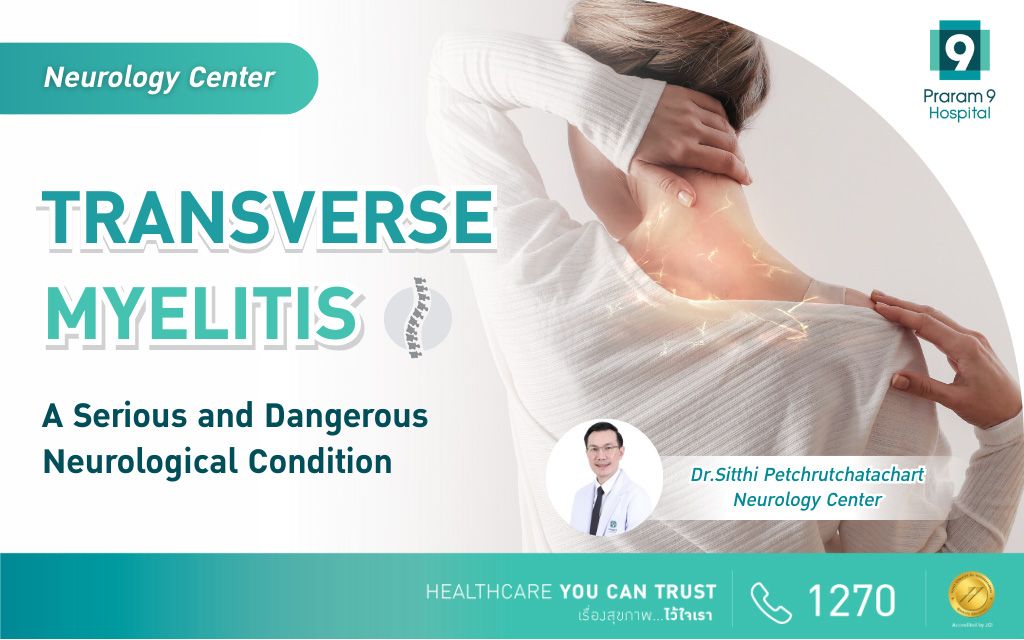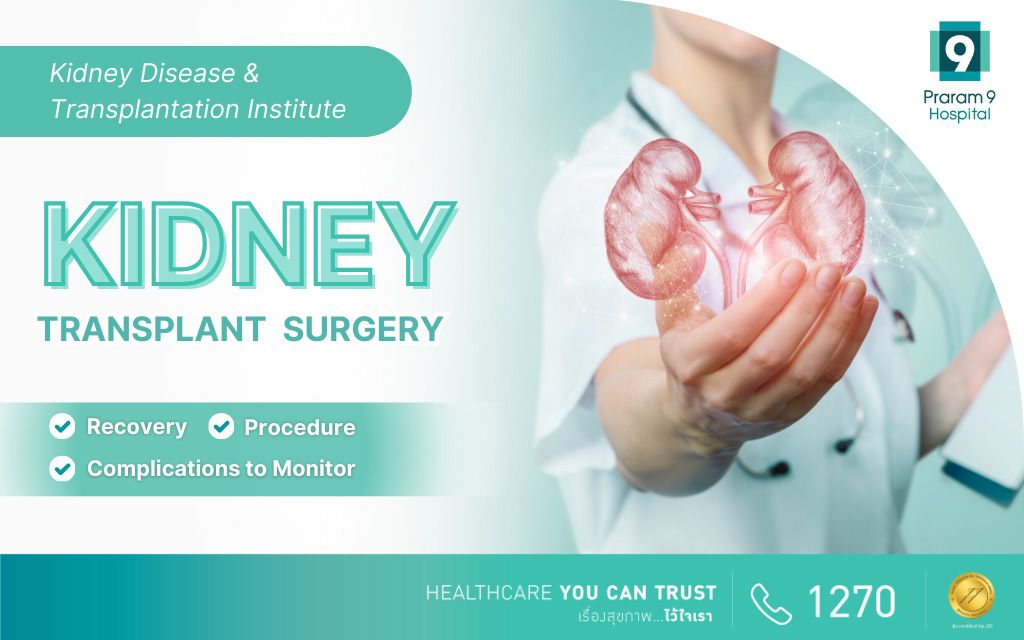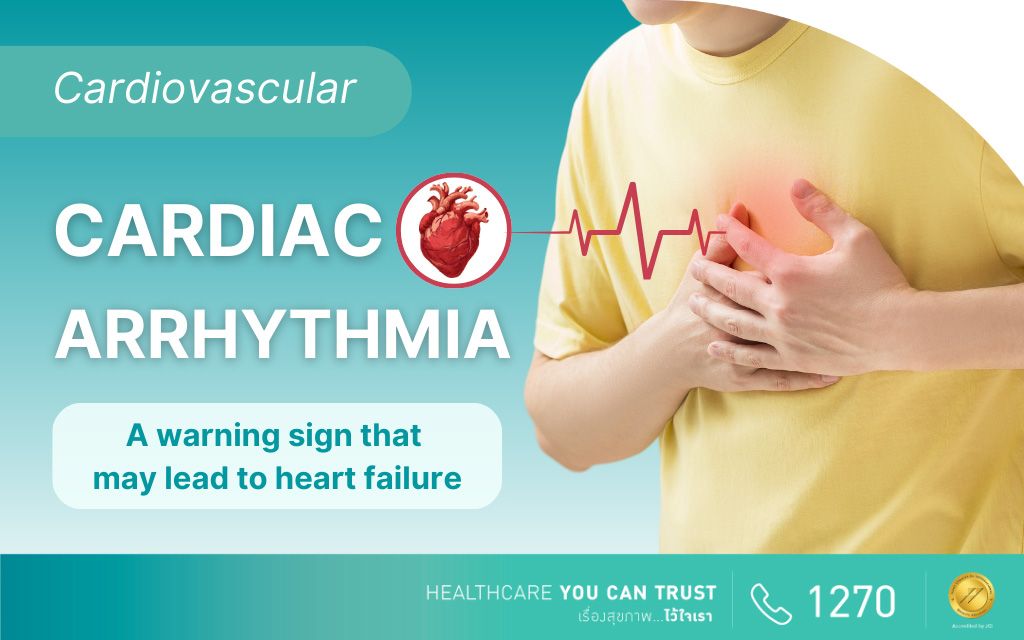Health Articles
Knowledge
Transverse Myelitis: A Serious and Dangerous Neurological Condition

Transverse Myelitis is a severe neurological disorder caused by inflammation of the spinal cord, which plays a crucial role in controlling body movement, sensory perception, and the excretory system. Without appropriate treatment, it may lead to permanent disability or even become life-threatening.
Symptoms of Transverse Myelitis
The symptoms of transverse myelitis can range from mild to severe. In some cases, the disease may progress rapidly depending on various factors. Common symptoms include:
- Acute Pain
Patients often experience back pain or radiating nerve pain in the arms and legs. This can be an early sign of the disease but is sometimes mistaken for general muscle soreness.
- Sensory Abnormalities
Symptoms such as numbness or loss of sensation in the arms, legs, or torso are common. Some patients may feel sharp, electric shock-like pain or burning sensations.
- Motor Dysfunction
Weakness in the arms or legs or partial paralysis may occur, making it difficult to maintain balance or walk. In severe cases, paralysis of the respiratory muscles may lead to breathing difficulties or respiratory failure..
- Bladder and Bowel Dysfunction
Patients may experience urinary or fecal incontinence, difficulty urinating, or urinary retention.
Additionally, some patients may also experience inflammation of the optic nerve or brain, leading to visual impairments.
Causes and Risk Factors of Transverse Myelitis
Transverse myelitis can result from various causes, including:
- Infections
Viral infections such as herpes, influenza, or COVID-19, as well as bacterial infections like tuberculosis and syphilis, can contribute to transverse myelitis.
- Autoimmune Disorders
Conditions like multiple sclerosis (MS) and neuromyelitis optica (NMO)
- Vaccination Complications
Rare cases have been linked to complications following certain vaccines.
- Spinal Cord Injuries
Trauma from accidents or other physical injuries.
Other conditions can mimic transverse myelitis, such as compressive myelopathy (spinal cord compression due to degenerative discs or tumors), syringohydromyelia (fluid-filled cysts in the spinal cord), spinal dural arteriovenous fistulas (abnormal blood vessels in the spinal cord), or Guillain-Barré syndrome. These conditions require entirely different treatments.
Risk factors include autoimmune diseases and a history of severe viral or bacterial infections.
Diagnosing Transverse Myelitis
A thorough neurological examination is essential for diagnosing transverse myelitis. Diagnostic tools include:
- MRI: To detect inflammation or abnormalities in the spinal cord.
- Lumbar Puncture: To analyze inflammation and detect infections in cerebrospinal fluid.
- Blood Tests: Help identify autoimmune diseases and evaluate inflammation severity.
Treatment of Transverse Myelitis
Acute Phase Treatment
- Corticosteroids: To reduce spinal cord inflammation.
- Plasmapheresis or IV Immunoglobulin (IVIG): Used when corticosteroids are ineffective and symptoms are severe.
- Antiviral or Antibiotic Medications: For specific infections.
Rehabilitation Phase Treatment
During this phase, patients often require rehabilitation to restore functionality and return to daily activities:
- Physical Therapy: To improve muscle strength and mobility.
- Occupational Therapy: To help patients adapt and regain independence in daily activities.
- Symptomatic Management: Pain management and care for bladder or bowel dysfunction, including catheterization when necessary.
Some patients may require long-term immunosuppressive medication to prevent recurrence.
Prevention of Transverse Myelitis
While preventing transverse myelitis may be difficult in some cases, maintaining overall health can reduce risk factors. Preventive measures include:
- Practicing good hygiene to minimize infection risks.
- Receiving vaccinations as recommended by healthcare providers.
- Managing chronic conditions, especially autoimmune disorders.
Conclusion
Transverse myelitis is a severe condition that can lead to permanent disability or death if not diagnosed and treated promptly. Early recognition of warning signs such as radiating pain, numbness, or weakness is crucial. If these symptoms occur, it is important to consult a specialist immediately for proper diagnosis and treatment.
For more information or urgent, please contact
TEL: 1270 (Local) or +662 202 9999
Email: [email protected]
You can consult a doctor from anywhere through video calls.














